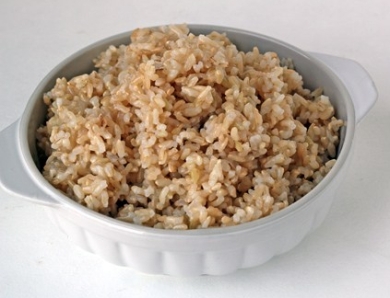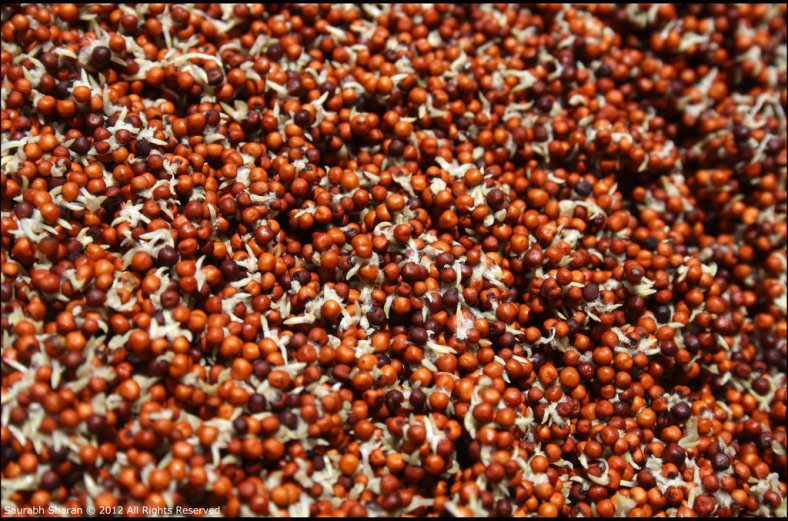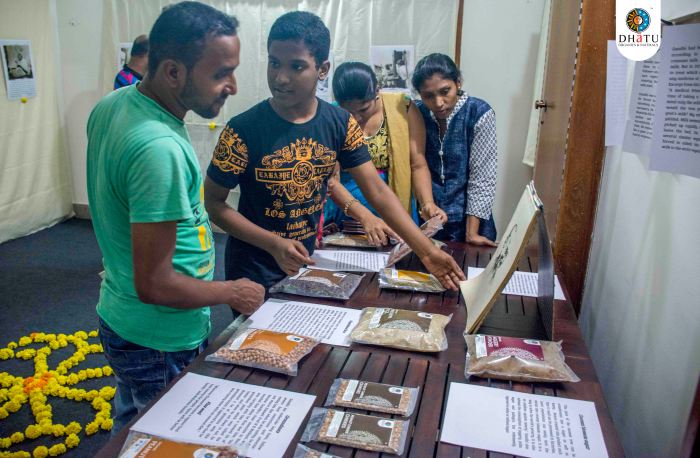At Turiya Wellness Center, we had 3 day wellness workshops from July 28-30, 2017. The topic on day 1 was Natural Supplements for a Healthy Body. The lecture was delivered by Dr.Sanjay, MBBS MDRD, Assistant Professor at the Department of Radiodiagnosis, K R Hospital, Mysore medical college and research Institute. We are sharing here the highlights from the talk as written down by one of the participants – Mrs.Geetha Naresh.
The third part of this 3 part blog is about daily recommendations for diet, nutrition and detox.
Recommended Daily Essentials (Golden Supplements)
- Soak 2 to 4 Almonds, 2-4 Raisins, and 1 Dried Fig in a glass of water overnight. Almond helps in strengthening the body, and in building immunity. Raisins help improve prostrate health, strengthen the muscles, and relieve arthritic and rheumatic pain. Fig (Anjeer) helps increase hemoglobin levels and is recommended for anemia.
- First thing in the morning consume the soaked almonds (after removing the skin) and raisins. Do not throw away the soaking water. See below for how to use it.
Recommended Daily Detox (Detox Drink)
- Take a pinch of turmeric, pepper powder (those with stomach related or allergy issues avoid pepper) Amla Powder or syrup, or a squeeze of lemon juice, Ashwagandha powder, Triphala powder, Basil seeds and honey and mix well with the left over soaking water and drink every day on empty stomach.
- Ensure honey is organic honey which is sold as wild honey in Organic Stores. Do not refrigerate it.
- Pinch of pepper powder helps in absorption of turmeric in the system.
- Honey and Amla act as anti oxidants.
- Triphala cleanses your stomach
- Ashwagandha is a rejuvenator and gives pain relief.
- Ensure all products are paraben/chemical free
- Turmeric helps patients with Alzheimers
Dhatu also carries SUPER GREEN CAPSULES. This contains Wheat grass, Spirulina, Barley Grass, Stevia, and Moringa. It comes in a box of 100 capsules and one Capsule a day for 100 days in a year is highly recommended.
Daily Dietary Recommendation
- Golden Supplements (Badam, Raisins and Fig soaked over night)
- Detox Drink
- Multi-vitamin Capsule
- Supergreen Capsule (once a day for 1oo days)
- Vitamin D Sachet once a week for 4 weeks
- One fruit a day – seasonal fruits
- Carrots once a week
- Leafy Greens once a week
- Flax seeds (not recommended for people with high cholesterol)
- Citrus Fruits : once a week
- Along with the above replace Sugar and Salt as explained above and ensure oil used for cooking and frying as recommended in Part 1.
- Avoid Polished rice and use Red Rice, Brown Rice, un polished rice, Rajamudi rice .
- Avoid Wheat available in the form of Maida and try and use from wheat wheat, It is not suited for South Indians for daily consumption.
- Millets may be used once or twice a week.
- Moringa leaves if available in natural form from the tree is highly recommended for consumption once a week.
- Avoid Meat and Meat products, Broiler Chicken, etc., as hormones are injected into the birds for weight and speedy growth and this in turn affects children and adults, and causes hormonal imbalance, muscle spasm, joint pain and over consumption causes Cancer, Gout, etc.
Disclaimer
- Each body is different and may react adversely at times. So it is highly advised that consultation with a qualified dietician or a General Physician is taken before starting on any of the above if you have any chronic illness or disease.
- Ensure the products are bought from a good Organic Store and check for labels such as GMP Certified, USDA or food certification.
- Dosage and Diets are recommended for Adults only and not suitable for children.
- No miracles can be expected in a week and it would take minimum 4 weeks or more to see the results/effect.
- Each body is different and so keep observing for any discomfort, allergy once you start your dietary change and discontinue or continue as per comfort.




 affected people are eliminating it from their diets. However, shifting to mainly wheat has also been problematic for people with Gluten sensitivity/intolerance. So whole grains like
affected people are eliminating it from their diets. However, shifting to mainly wheat has also been problematic for people with Gluten sensitivity/intolerance. So whole grains like  adopted by more people. Brown rice is also a good source of manganese, magnesium and Vitamin B6. It is good for the heart, helpful in weight management, and is effective in managing lifestyle diseases. However, as we have seen in the
adopted by more people. Brown rice is also a good source of manganese, magnesium and Vitamin B6. It is good for the heart, helpful in weight management, and is effective in managing lifestyle diseases. However, as we have seen in the 




 The India Government identified five limbs of Indian traditional healing systems abbreviated as AYUSH (Ayurveda, Yoga, Unani, Siddha, and Homeopath).
The India Government identified five limbs of Indian traditional healing systems abbreviated as AYUSH (Ayurveda, Yoga, Unani, Siddha, and Homeopath). world ‘siddha’ comes from the word ‘siddhi’ which means ‘an object to be attained’. In Tamil, Siddhar is the one who has attained siddhi and Agasthiya, a foremost Siddhar, is believed to have founded and professed the philosophy of Siddha medicine, and is known as the father of Siddha Medicine.
world ‘siddha’ comes from the word ‘siddhi’ which means ‘an object to be attained’. In Tamil, Siddhar is the one who has attained siddhi and Agasthiya, a foremost Siddhar, is believed to have founded and professed the philosophy of Siddha medicine, and is known as the father of Siddha Medicine. According to Siddha, other than the tridoshas of Vata, Pitha and Kapha, there are seven basic tissues and 96 thathvas, that make up our body. The food or the building block converts into tridoshas, tissues and waste. And any disturbance to the delicate balance of tridoshas is considered as an illness.
According to Siddha, other than the tridoshas of Vata, Pitha and Kapha, there are seven basic tissues and 96 thathvas, that make up our body. The food or the building block converts into tridoshas, tissues and waste. And any disturbance to the delicate balance of tridoshas is considered as an illness. For example, nearly 25 varieties of water soluble alkalis and salts, which are inorganic in nature, are used in the making of the medicines. These are called Uppu. About 64 types of minerals – classified as the ones that vaporize in fire – are also utilized. Even metals or alloys such as gold, silver, copper, tin, lead and iron are purified to be added in the medicines. Extracts from conch and corals too are used. However, Mercury, its alloys and Sulphur are the most significant ingredients in Siddha medicine.
For example, nearly 25 varieties of water soluble alkalis and salts, which are inorganic in nature, are used in the making of the medicines. These are called Uppu. About 64 types of minerals – classified as the ones that vaporize in fire – are also utilized. Even metals or alloys such as gold, silver, copper, tin, lead and iron are purified to be added in the medicines. Extracts from conch and corals too are used. However, Mercury, its alloys and Sulphur are the most significant ingredients in Siddha medicine.

 The metabolic activity of resting dry seeds increases as soon as they are hydrated during soaking. During germination nutrients are enzymatically broken down and simplified: protein into amino acids, fats into essential fatty acids, starches into sugars. Minerals chelate or combine with protein in a way that increases their utilization. Since no external nutrients are added, only water and oxygen are consumed by the sprouting seeds to enable these complex biochemical changes. Proteins, vitamins, enzymes, minerals, fiber and trace minerals multiplies during germination process.
The metabolic activity of resting dry seeds increases as soon as they are hydrated during soaking. During germination nutrients are enzymatically broken down and simplified: protein into amino acids, fats into essential fatty acids, starches into sugars. Minerals chelate or combine with protein in a way that increases their utilization. Since no external nutrients are added, only water and oxygen are consumed by the sprouting seeds to enable these complex biochemical changes. Proteins, vitamins, enzymes, minerals, fiber and trace minerals multiplies during germination process. Drying does not affect the superior nutritional value accumulated from germination but
Drying does not affect the superior nutritional value accumulated from germination but Sprouting changes dormant seeds into a living food. It’s nutritional qualities are now readily bioavailable when we eat sprouted grain or the flour. The changes that occur during sprouting increase nutrition, improve digestion and assimilation. This is the reason sprouts are considered predigested food.
Sprouting changes dormant seeds into a living food. It’s nutritional qualities are now readily bioavailable when we eat sprouted grain or the flour. The changes that occur during sprouting increase nutrition, improve digestion and assimilation. This is the reason sprouts are considered predigested food.











